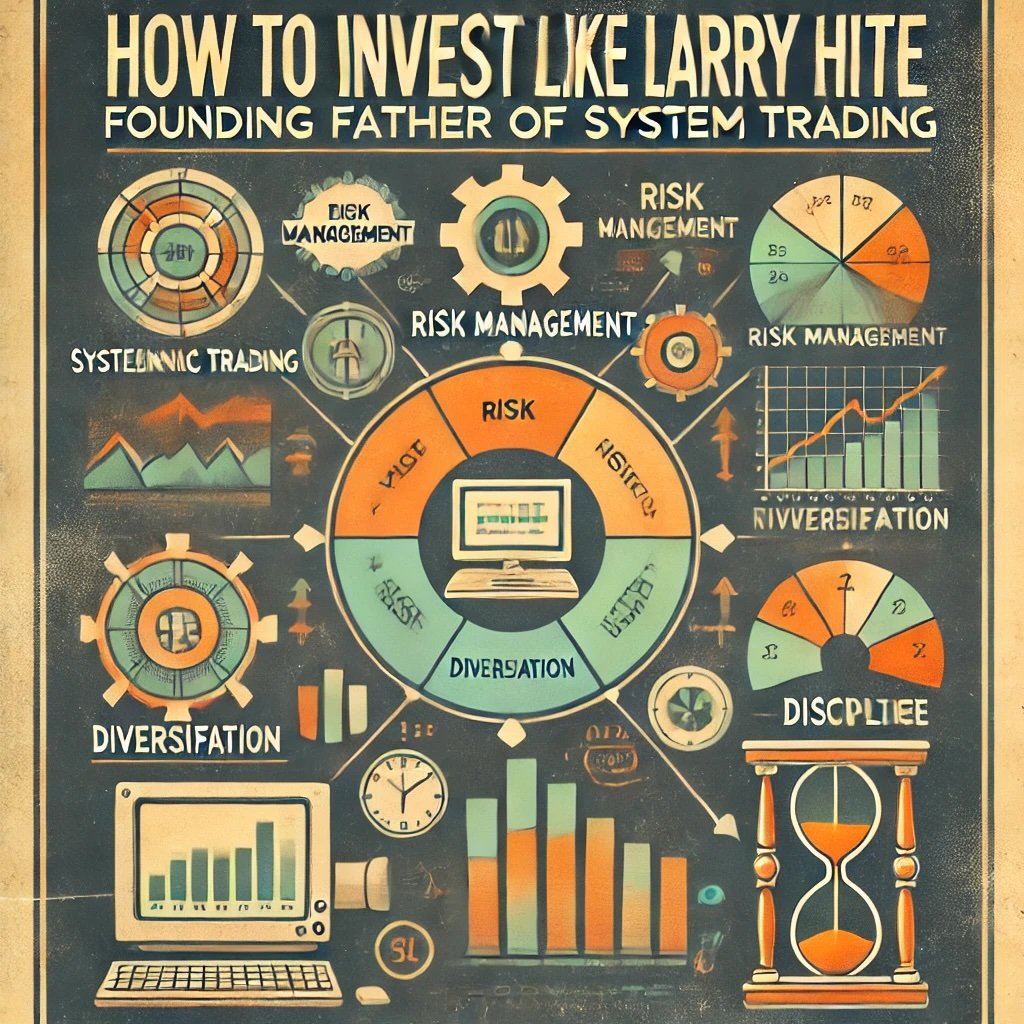At some point in your investing journey you’ll likely encounter a group that is the literal antithesis of what you stand for as an investor.
For me that investing group is The Bogleheads.
They’re the opposite of me in more or less every manner possible under the sun, moon and stars above.
I don’t believe in market-cap weighted equity exposure as if it was pancakes drowning in maple syrup on a Sunday morning.
I’m not slavishly obsessed with fees. I’d rather have dessert than collect crumbs under the table.
I don’t believe in being average.
I’m not keen to stay in my lane.
I’m not interested in commandments and rules.
I’m contrarian by nature and a sponge investor at heart.
I’m not overly predictable and willing to tow the party line – espousing talking points that have been refuted at large.

Also, I’m curious enough to have studied alternative investment strategies and equity optimization to the point where I’ve put in the necessary work (with regards to back-tests) to see firsthand that portfolios composed of market-cap weighted equities and aggregate bonds are not sufficiently diversified and all-weather regime prepared.
Last but not least, I’m not seeking affiliation as an investor and I’m not interested in going down a narrow tunnel where I’ll be making myself prone to confirmation bias.
Also, and by the way most importantly, I’m not interested in doing what everyone else is doing in life or with my investment portfolio.
Had I done that in my life, I wouldn’t have met my wife (a fellow travel vlogger), wouldn’t have taught English in South Korea, wouldn’t have travelled the world to visit 75 different countries and wouldn’t be currently working on exciting new projects (this blog) and something I’m doing in Argentina at the moment.
I’d be living on the small-island I grew up on in British Columbia. I’d be working a nine to five. I’d be not living out my personal legend during this brief time I’ve got on this planet.
This is a longer intro than normal but I had quite a bit to get off of my chest!
Before I inform you of the 5 reasons why I’m not a Bogleheads investor, let’s first define what one is.

Why I Am Not A Boglehead
Hey guys! Here is the part where I mention I’m a travel vlogger! This investing style review is entirely for entertainment purposes only. There could be considerable errors in the data I gathered. This is not financial advice. Do your own due diligence and research. Consult with a financial advisor.

These asset allocation ideas and model portfolios presented herein are purely for entertainment purposes only. This is NOT investment advice. These models are hypothetical and are intended to provide general information about potential ways to organize a portfolio based on theoretical scenarios and assumptions. They do not take into account the investment objectives, financial situation/goals, risk tolerance and/or specific needs of any particular individual.
Who Are The Bogleheads

They’re a group of 90,000 registered members that honor Vanguard founder and late investor John Bogle.
John Bogle, unlike his followers today, was a contrarian and maverick in the sense he was the creator of the index fund.
Having to endure criticism and scorn, during the early days of its creation, was something John faced during indexings early years.
The index fund in many ways changed the investment landscape for the better.
Bad active management and high fees were the options being served to investors in terms of typical funds for most of the 20th century.
Indexing changed all of that. And for the better.
However, owning market-cap weighted stocks and aggregate bonds, although potentially geographically diverse (if one goes global and doesn’t succumb to home country bias) is anything but strategically or stylistically diverse.
It’s pure and simple market-beta.
Research has show that optimization of equities and alternative investments make portfolios more robust, resilient and regime ready for whatever economic regime is thrown its way.
Instead of recognizing that further research has advanced portfolio strategies, since the days of John Bogle’s revolutionary achievements, investors that adhere to his philosophy today have portfolios that are less than optimal.

What Do The Bogleheads Believe

The Bogleheads believe in the following 11 core principles under “prepare to invest” plus “create a portfolio” and “maintain discipline”.
1) Live below your means
2) Develop a workable plan
3) Never bear too much or too little risk
4) Invest early and often
5) Diversify
6) Invest with simplicity
7) Use index funds when possible
8) Minimize costs
9) Minimize taxes
10) Never try to time the market
11) Stay the course
source: The Money Plant on YouTube
I agree with most of these.
In fact, it is only points 5, 6, 7 and 8 where I don’t see eye to eye.
Let’s now explore the reasons I’m not a member of the Bogleheads, never have been a member of the Bogleheads and never will be a member of the Bogleheads.

Top 5 Reasons I’m Not A Bogleheads Investor

1) Simplicity vs Complexity
One click and done. All in one. Simple indexing.
Stocks. Bonds.
This all sounds great until a scenario such as the 70s, early 2000s, 2008 and 2022 rears its ugly head.
How does a simple strategy of merely market-cap weighted stocks and bonds perform under those scenarios.
Terrible.
The idea of simplifying your life is a powerful and strong message.
It makes sense in a lot of ways.
But in terms of investing, it leaves you prone to significant drawdowns when stocks are getting hammered in the markets and bonds are not providing (as much or way too little) defensive coverage.
What is missing?
A 1-2-3 approach to diversification.
Let’s explore that below.

2) Lack of Strategic Diversification
When I started working on my Picture Perfect Portfolio design, I did so from a bottoms up approach.
I was genuinely curious to see what would enhance returns and provide significant downside protection.
What I found was that I needed to expand the canvas from 100% to something greater.
I then started plugging in equal parts equities, bonds and alternatives and magic started to happen.
I could build a portfolio that achieved significantly higher returns while managing risk better than the industry standard 60/40.
The “secret sauce” was alternative investments and a multi-strategy and multi-asset class approach.
When I back-tested results, by just owning market-cap weighted stocks and aggregate bonds I would both underperform and have significantly more negative years.
By merely shaving down a small amount of equities and bonds and adding an alternative, such as gold, I would greatly improve the results, risk, sortino, sharpe, maximum drawdown, worst year and overall success ratio of my portfolio.
Just by doing one thing alone. Thinking outside of the box.
Being open to new ideas.
That is all it took to enhance returns and manage risk.
And gold is not anywhere close to being the best alternative strategy in my opinion.
It is far too volatile.
For instance, managed futures provides better risk-adjusted uncorrelated returns.
Adding TIPS in the bond category smoothed out my portfolio and made it more inflation regime ready.
By adding uncorrelated assets and adhering to an equal parts equity, bonds and alternative sleeve I obtained, what for me, is the Picture Perfect Portfolio.

3) Factor Investing and Market Cap Size Exposure
I’ve now written three different articles on the benefits of optimizing equity strategies using a multi-factor rules based approach, considering mid-cap investing in your portfolio and avoiding a large-cap centric portfolio unless you’re interested in finishing in last place.
The benefits of having exposure to mid-cap, small-cap and micro-cap equities includes enhanced potential returns and no lost decades over the past 50 years.
With large-cap centric portfolios being prone to investor exuberance, high forward P/E concentration and narrative based investing it makes sense to hang-out in territory where the road is less travelled.
Moreover, equity factor strategies provide exposure to uncorrelated strategies that perform well and struggle under various economic regimes.
For instance minimum volatility, yield and quality strategies are more defensive than market-cap weighted equities.
Pro-cyclical strategies such as deep value investing and size exposure can perform relatively well when market-cap beta is struggling.
Consider how well value is doing this year versus broad markets?
By including numerous factor strategies in your portfolio you’ll ensure that you’ll always have ‘something’ in your portfolio that relatively thrives.
This also means you’ll have strategies that underperform.
That is what diversification looks like.
Not putting all of your risk in market-beta.
Having opportunities to contribute “buy low” when strategies are underperforming while riding recent winners that are doing great.

4) Being Mediocre = Play It Safe “Own Them All”
Out of all the things that irk me about the philosophy of The Bogleheads group it is the message of being mediocre.
Be average. Own them all.
Own them all?
Why would anyone want to do that?
Think about any other endeavor you pursue in life.
Imagine yourself as the manager of a professional sports team.
Would you want to own the average players in the league?
If so, you’d be comfortable finishing in the middle of the pack, missing the playoffs and alienating your fan base over time.
It is through the process of ‘selection’ and ‘exclusion’ that you come up with something optimal.
For instance, my Picture Perfect Portfolio has been able to achieve such phenomenal backtests because of what it owns and what it doesn’t own.
Minimum volatility equities, for instance, screen out the most volatile companies and seek the most stable ones.
This strategy in the past 20 years has proven to be at times 1000 basis points more defensive than “owning them all” in a market-cap weighted strategy.

5) Slavish Fee Obsession
Honestly who doesn’t love a bargain? Wouldn’t we all want to pay less for something?
Yes. But not if it means owning an inferior product.
Also, not if it excludes certain uncorrelated investing strategies that improve diversification and portfolio stability just because they inherently have higher costs such as trend-following.
Would I be willing to pay a few more basis points for a more sophisticated multi-factor equity strategy that has proven to outperform over long periods of time by 150 to 300 basis points?
Most definitely.
In some ways this slavish fee obsession seems akin to fighting over crumbs under the table when dessert is being served up above to other guests sitting patiently.

Final Thoughts From Nomadic Samuel
At the end of the day I’m a Sponge Investor and not a Bogleheads Investor.
Although there is plenty I respect about the Bogleheads there is equally as many things I’ll never be in full agreement over.
I’m highly cognizant of what being a part of a group does in terms of influencing your openness to new ideas and research.
Thus, I’m not looking to ever be a hardcore value investor, a Bogleheads investor or part of any other type of investing group.
I’m a free-agent that is perpetually seeking to improve the performance, diversification and risk-management of my portfolio.
I wish all investors well and to be perfectly honest if you focus on your patience, time, discipline, diversification and strategy of your portfolio you’ll likely achieve all of your investing goals.
However, at the end of the day I’m pursuing the picture perfect portfolio and being a part of the Bogleheads group would be detrimental to that process.
So best of luck Bogleheads but I’m off on my own investing journey.
Ciao for now.
Important Information
Investment Disclaimer: The content provided here is for informational purposes only and does not constitute financial, investment, tax or professional advice. Investments carry risks and are not guaranteed; errors in data may occur. Past performance, including backtest results, does not guarantee future outcomes. Please note that indexes are benchmarks and not directly investable. All examples are purely hypothetical. Do your own due diligence. You should conduct your own research and consult a professional advisor before making investment decisions.
“Picture Perfect Portfolios” does not endorse or guarantee the accuracy of the information in this post and is not responsible for any financial losses or damages incurred from relying on this information. Investing involves the risk of loss and is not suitable for all investors. When it comes to capital efficiency, using leverage (or leveraged products) in investing amplifies both potential gains and losses, making it possible to lose more than your initial investment. It involves higher risk and costs, including possible margin calls and interest expenses, which can adversely affect your financial condition. The views and opinions expressed in this post are solely those of the author and do not necessarily reflect the official policy or position of anyone else. You can read my complete disclaimer here.
source: Bogleheads on YouTube






Well written about Share Market and Investing…
Apart from also having an Argentine wife (we split our time between San Diego and Mar del Plata) I also share your contrarian nature and “sponge investor” mentality. There’s a lot of good with the Bogleheads but, my God, is it ever an echo chamber (if not a religious cult!) The one time I brought up real diversification and MPT I got grilled parrilla-style! Did I mention I’m also a troll? I still lurk on the BH forums and drop-in Ninja style and throw some troll bombs here and there maybe because I think I’ll get through to someone (I actually have a couple of times). Mostly I’m just sad/depressed knowing that the next major downturn will blow-up a lot of these 60/40 3-fund portfolios and people will be reaching for their TIPS ladders. Don’t get me started on TIPS…
That was about the douchiest thing Ive ever read in my life, dear lord… why do you care so much about what other people are doing? Why are you trying to sell yourself so hard?these are queations a good therapist would ask. Small dick energy.
You are obviously very impressed with yourself, however, and sometimes thats enough. Though, a travel blog? Whoopy-doo. We all travel now, nothing special about it. Argetina is great though. Don Julios.